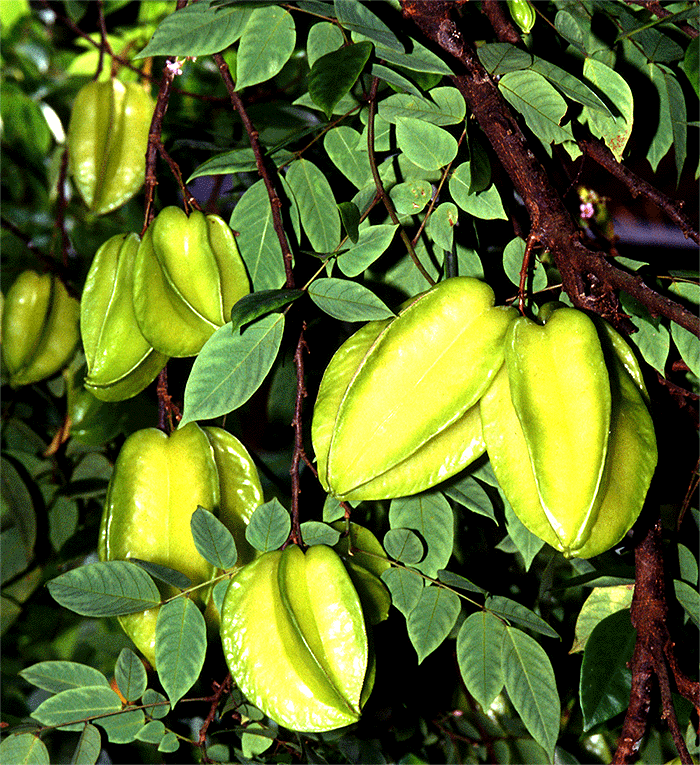|
|
|
|
 Carambola Averrhoa
Carambola Linn Carambola Averrhoa
Carambola Linn Originated in the Java area of Indonesia, the Carambola is also known as star fruit or star apple because the five lobes that make up its shape take in the appearance of a star when sliced. When the fruit reached the Philippines the named the fruit Carambola or kambola, a name that remains today. The Latin names comes from Averroes, the famous Moorish philosopher and astronomer who lived in Spain during the 12th century. The Sanskrit version of Carambola is karmara. meaning appetizer. The fruit is grown throughout the sub-tropical climates where water is abundant including Brazil, Africa, and in Florida. The fruit grows in clusters of three or four about 5 inches long with a yellowish-green skin that turns very yellow when ripe, the fruit is translucent. The yellow orange flesh is juicy, with a slightly tart taste. It contains small oval seeds that should be removed and not eaten. Because of the flavor is so mild, Carambola tastes best when integrated into poultry or fish dishes. It is ideal for making jams, jellies, preserves, sorbet, and drinks, especially when mixed with other fruit. When unripe and still acidic, Carambola may be used as an alternative to lime slices for garnishing foods. In Asia, the juice has a practical use and is used for removing stains from clothing. Carambola also contains oxalic acid which slows down the body's absorption of calcium and iron and makes it useful for polishing brassware and other metals. When sliced cross-wise, the pieces look like five distinct-angled stars. Selecting and handling Look for fruit with that are firm with smooth, unwrinkled skin and no blemishes. Store in a cool place or put in a plastic bag and place in the refrigerator where the fruit will keep for two to three days. To prepare , slice crosswise, chop or grate and add to recipes. If eating raw, slice off the ridged edges as they are tough to chew. Season October to December
|
